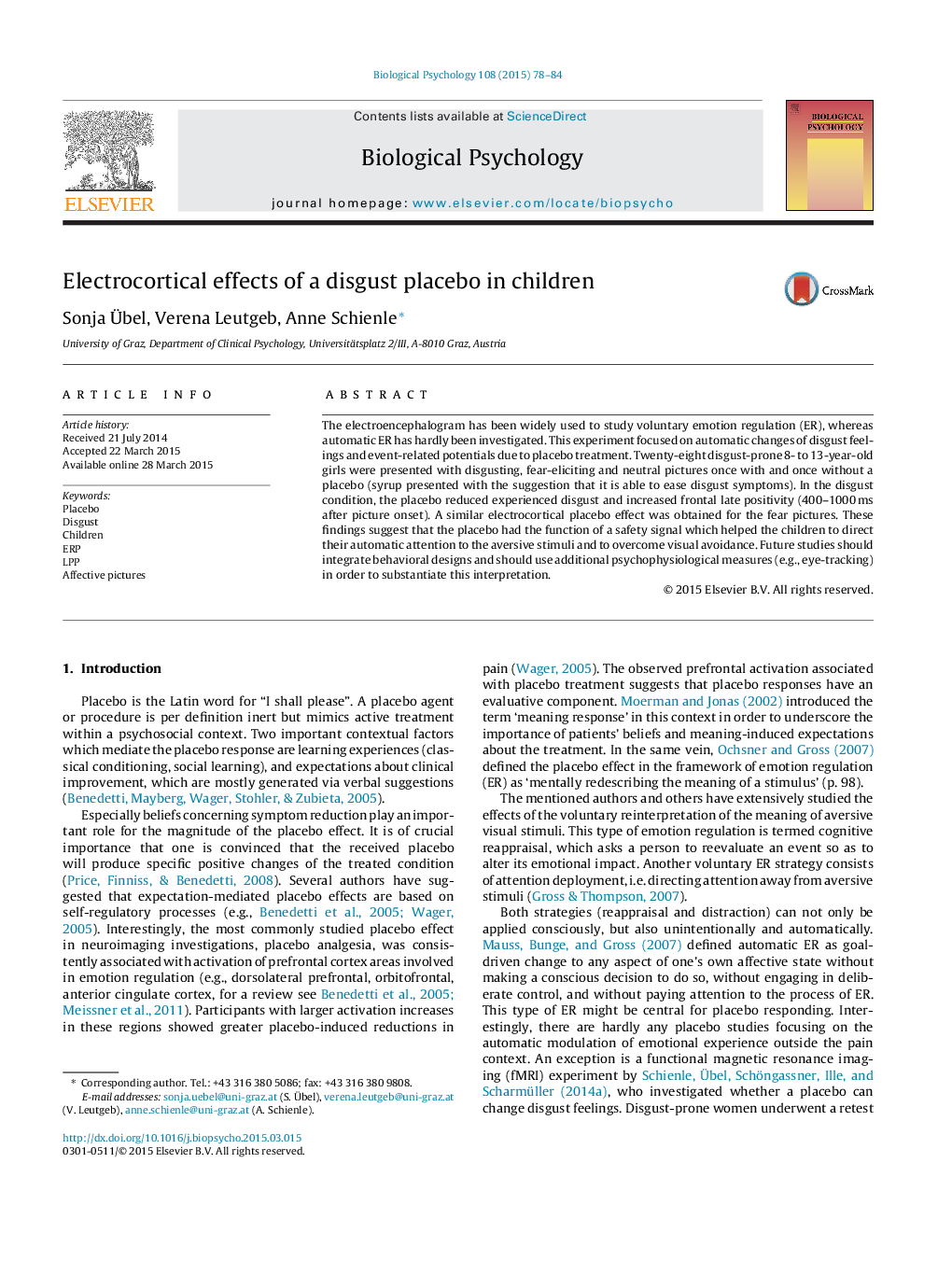| Article ID | Journal | Published Year | Pages | File Type |
|---|---|---|---|---|
| 7278590 | Biological Psychology | 2015 | 7 Pages |
Abstract
The electroencephalogram has been widely used to study voluntary emotion regulation (ER), whereas automatic ER has hardly been investigated. This experiment focused on automatic changes of disgust feelings and event-related potentials due to placebo treatment. Twenty-eight disgust-prone 8- to 13-year-old girls were presented with disgusting, fear-eliciting and neutral pictures once with and once without a placebo (syrup presented with the suggestion that it is able to ease disgust symptoms). In the disgust condition, the placebo reduced experienced disgust and increased frontal late positivity (400-1000Â ms after picture onset). A similar electrocortical placebo effect was obtained for the fear pictures. These findings suggest that the placebo had the function of a safety signal which helped the children to direct their automatic attention to the aversive stimuli and to overcome visual avoidance. Future studies should integrate behavioral designs and should use additional psychophysiological measures (e.g., eye-tracking) in order to substantiate this interpretation.
Related Topics
Life Sciences
Neuroscience
Behavioral Neuroscience
Authors
Sonja Ãbel, Verena Leutgeb, Anne Schienle,
